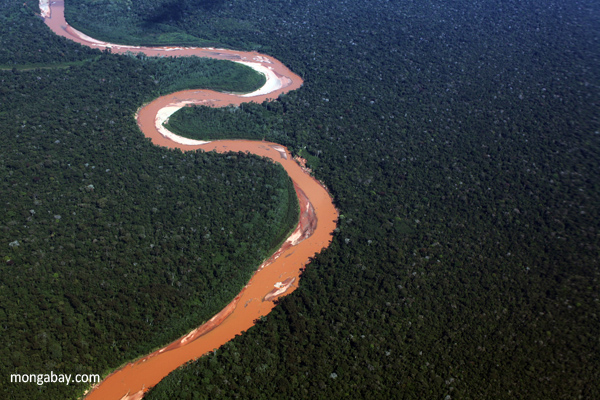Bacteria living in the Amazon River digest nearly all wood plant matter that enters the river before it reaches the Atlantic Ocean, triggering the release of carbon locked up in the vegetation instead of sequestering it in the deep ocean, finds a new study published in Nature Geoscience. The research explains the mechanism by which the world’s largest river “exhales” large amounts of CO2.
The study, led by Nick Ward of the University of Washington, is based on the chemical composition of water from the Amazon river. It found that bacteria break down lignin, the structural compound that makes up plant bark and stems, within two weeks. Previously it was believed lignin was too difficult for bacteria to digest.
“People had just assumed, ‘Well, it’s not energetically feasible for an organism to break lignin apart, so why would they?’” Ward said in a statement. “We’re thinking that as rain falls over the land it’s taking with it these lignin compounds, but it’s also taking with it the bacterial community that’s really good at eating the lignin.”
The bacterial community is so good at eating lignin that only five percent ever reaches the ocean.
“People thought this was one of the components that just got dumped into the ocean,” Ward said. “We’ve found that terrestrial carbon is respired and basically turned into carbon dioxide as it travels down the river.”
“The fact that lignin is proving to be this metabolically active is a big surprise,” added co-author Jeffrey Richey, a University of Washington professor of oceanography who has been studying the Amazon for three decades. “It’s a mechanism for the rivers’ role in the global carbon cycle – it’s the food for the river breath.”

Tributary of the Amazon River
Overall the researchers estimate that 40 percent of the Amazon’s lignin breaks down in soils, while 55 percent breaks down in the river system. The study thus confirms earlier work indicating that most of the carbon stored in vegetation carried by the Amazon does not end up being sequestered in the deep ocean.
Related articles